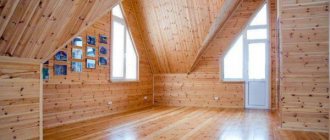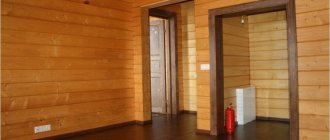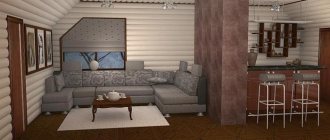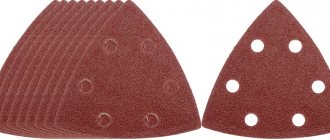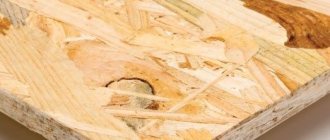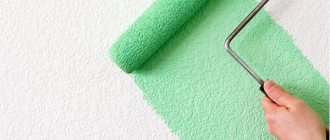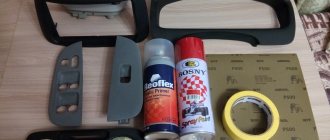Briefly about the main thing
To process lining in a bathhouse, materials that are resistant to temperature changes, humidity, and washing are used.
Also important is inertness to fungus, mold, bacteria, and a safe composition for humans. When heated, many materials release toxins and other harmful substances, so the use of antiseptics, fire retardants, drying oils, varnishes with solvents and acrylic resins is unacceptable for the steam room.
For walls and ceilings, impregnations, mastics, oils and some varnishes are used. For shelves only oil or wax based formulations. This prevents the formation of a thick film to avoid burns.
Bleach is used in any room of the bathhouse, but before further processing of the wood, it is necessary to wait until the chlorine evaporates and the hydrogen peroxide decomposes.
Antiseptics and fire retardants are classified as pre-treatment agents for wood, but are not used as independent coatings. They protect the lining and help reduce the consumption of the finishing coating.
Rules for wood processing
The technology for processing wood in a bathhouse comes down to three stages: surface preparation, impregnation with a protective composition, and coating with a finishing agent. All work can be carried out only with dry lining with positive thermometer readings. The last requirement for building materials may have different meanings, therefore it is indicated in the instructions for use.
Wood preparation is aimed at ensuring good absorption and adhesion of the surface. To do this, the old coating must be removed using sandpaper. Before coating the inside of the bath after sanding, dust and debris, grease stains and damage are removed. You can use running water with a rag, a soft brush and destroyers of fungus, mold, bacteria and rust if it appears.
Cleaning the lining from the old coatingSource yandex.net
The prepared dry base is impregnated with antiseptics and fire retardants in all rooms except the steam room. Any method can be chosen: spraying, distribution with a brush or roller. Ventilation can be provided for drying, but drafts should be avoided. Finally, finishing is carried out using a similar algorithm.
Types of coatings
The wood in the bathhouse is coated with paint to reduce exposure to moisture and high temperature.
The steam room and washing room are subject to the greatest load. However, this load is different.
- In a sauna, the air temperature can rise to 110°C. However, the humidity here is low. Paint for such a room must withstand heat, but may be sensitive to water.
- In the steam room, the humidity is much higher - from 70 to 100%, depending on the type of bath. The temperature is noticeably lower – it rarely rises above 60°C. The finishing material must be resistant to both water and steam and temperature changes.
- In the washing room, the temperature is not higher than a comfortable +30°C, but the humidity here can be high - 90–100%. The paint chosen is as waterproof as possible.
In practice, painting the inside of a bathhouse, especially a log house, is not a good idea. Any paint will be less resistant to the above factors than the wood itself. But if there is no other way to protect the finish, they also resort to painting.
Oil impregnations and varnishes
Effect of oil impregnation against moisture
A bathhouse is a structure used with a certain frequency. The high temperature in the steam room is maintained only during the procedure. Then the room is specially ventilated, cooling to a low temperature.
In this mode, the boards are more likely to dry out and become covered with cracks rather than mold and rot. Therefore, oil impregnations and varnishes are best suited for treating the steam room.
The oil penetrates the top layer of the wood, forming not a film, but a structure impenetrable to water. At the same time, the wood continues to expand normally and decrease in volume as the temperature changes. This way the oil prevents cracks from appearing.
Antiseptics for bath floors
The floor in the bathhouse is covered with antiseptic impregnations against rotting.
It is not enough to paint the steam room or sauna in the bathhouse - you need to take care of protection from rotting. The weak link in this room is the floor. Water flows onto it, steam is deposited, and it comes into contact with a cold concrete base or soil. To prevent the wooden floor in the bathhouse from rotting 5-6 years after construction, it must be treated with antiseptic impregnations.
Liquids based on substances that have a disinfecting effect:
- Acrylic-based water-based compositions. Moisture-resistant, prevent the growth of fungus, but are not very effective. More suitable for processing the dressing room.
- Organic – based on oils. They are better absorbed by wood and are moisture resistant.
- Products based on wax and urethane oils are absorbed to great depth. In addition to the water- and dirt-repellent effect, they give the timber and lining velvety and softness.
- Combined compositions increase both water resistance and fire safety.
It is strictly forbidden to use compounds that release toxins when drying to treat wood.
Water-dispersed impregnations
Acrylic paints reduce the harmful effects of moisture on wood
You can paint the logs inside the sauna or steam room with water-soluble paints.
The floor and walls in the steam room are painted with water-dispersed acrylic paint. It is quite resistant to temperature changes and does not prevent the penetration of steam. The hiding power is usually low, but the wood can be given any color. The downside is its low durability, the paint washes out quite quickly.
Paint for a bathhouse in a washroom should be as resistant to water as possible. The best products are latex or polyurethane based. For a dressing room or rest room finished with plaster, you can use any compositions marked “for interior decoration.”
The paint forms a film coating on the surface of the wood. And oil compounds penetrate inside, so in the steam room the walls are treated with impregnations.
Wax-based impregnations
Wax paint does not allow moisture to pass through, so it is well suited for baths and saunas
Wax is offered in liquid - viscous composition, and solid. The latter is somewhat more difficult to apply without the habit, but the treatment is carried out less frequently. The product does not create a sticky film and does not attract dirt.
If you only need to protect surfaces from water and steam, wax is more suitable. It is transparent, does not hide the structure of the wood, has some antioxidant activity, and therefore prevents the darkening of the wood.
Water-based polyurethane varnish
This is a kind of resin solution, where water, ethanol, and ether are used as a solvent. For the bath, choose water-soluble varnishes. They are resistant to high temperatures and to acids, oils and salts.
Polyurethane varnish is wear-resistant. Since it is based on water, the varnish layer does not create increased tension on the surface of the wood, and therefore is not prone to cracking. And since the resins polymerize already during drying, there is no subsequent peeling.
Popular manufacturers
In order for you to get an idea of what the companies that buyers most often pay attention to offer, we have made a short review of the products of the most popular manufacturers
Paint for saunas and baths "Tikkurila"
Paint for saunas and baths "Tikkurila" Supi Lattiaolju
Finnish needs no introduction. Its name is well-known to everyone, but we are interested in what it offers specifically for the sauna, beloved by all Finns.
For floor
Oil emulsion for wooden floors – Supi Lattiaolju. They say that it makes floors crack less, and not only becomes water- and dirt-repellent.
Betolux – paint for wooden and concrete floors in saunas.
For walls and ceilings
Protective composition for wood based on acrylates – Supi Arctic. Also pearlescent! And with antiseptic.
Supi Saunasuoja is a semi-matte acrylate composition for wooden cladding of sinks.
Oasis Bathroom – water-dispersion paint for walls of bathrooms and washrooms.
For regiments
Supi Laudesuoja - oil for shelves so that they do not lose color, do not absorb water, sweat, and dirt.
Supi Saunavaha - wax, but not only for shelves, but also for frames, wall panels, doors and ceilings.
Certa – for the stove
Those who are looking for heat-resistant paint for a sauna stove will, of course, first of all come across CERTA enamels. They are not only widespread, but also designed for maximum temperatures - 750-1000 degrees.
You can use this paint to paint a stove in a bathhouse, as well as a fireplace or barbecue, in general, anything metal that comes into contact with fire.
ATTENTION! If you also wanted to paint heating radiators, then you do not need paint for the stove in the bathhouse; there are cheaper varieties, because they are designed for not such high temperatures, and the radiator does not heat up above 100 degrees.
In the manufacturer's catalog we found the following varieties:
Heat-resistant paint CERTA - withstands up to 900 degrees, and also patiently withstands the chemical effects of salts, petroleum products and mineral oils. Moreover, they have tested its durability for 25 years and now guarantee that it will last exactly that long!
The most interesting thing is that the myth that the most heat-resistant paints are produced only in black has been dispelled - the manufacturer offers 34 color shades!
CERTA PATINA is not an independent paint, it is used for decorative effects - wear or antiquity, it is applied to the base described above. Holds up to 700 degrees.
CERTA varnish is universal - metal can be protected from corrosion and high temperatures by simple varnishing if you use a colorless varnish from this company. It can withstand up to 300 degrees.
Next come varnishes for metal, concrete, brick, ceramics and glass, which allow them to withstand different temperatures: KO-85 - up to 250, KO-851 - up to 300, KO-08 (for steel and non-ferrous metals) - up to 300, KO -075 (for enamel) – up to 500.
Types of premises
Fortunately, there are not many rooms in the bathhouse (in a standard one). Therefore, we will quickly go through the options of what paint to paint the inside of the bathhouse.
Steam room
This is the most problematic room. Many people believe that there is no need to paint anything there at all, but the price for such a decision is rapid darkening of the wood (and almost everyone has a steam room traditionally made of wood or lined with wood), cracking of the wood (this happens more often from poor ventilation during drying), susceptibility to rotting and mold damage (linden and aspen are very unstable species).
So the absence of any protective coatings, on the one hand, should be considered environmentally friendly, and on the other, costly in terms of future repairs.
You can paint the inside of the steam room with both paints and varnishes, but let them be water-soluble paints. And it would be nice if the label mentioning GOST standards stated that this composition is applicable in the steam room.
Washing
Both silicone and acrylic paints are suitable here. In general, everything that patiently endures the effects of moisture.
Other paints will crack and peel off in pieces under constant exposure to water.
ADVICE! Water dispersions do not tolerate frost well: if the water in the paint freezes, then after defrosting it will lose its quality. Therefore, buy them in the warm season, produced recently.
Impregnations and varnishes are also suitable for painting washing areas.
Again we draw your attention to scuba gear
Of course, in the second case, it is better to paint when it is possible to ensure the best ventilation and the absence of people. Don't forget to use respiratory protection.
IMPORTANT! Remember that enamels and alkyd paints are fire hazards, but water-soluble paints are not.
Dyeing process
Features of applying decorative composition
Before painting the inside of the bathhouse, you should select the tools used for this purpose. After all, the quality and appearance of the surface also depends on this.
There are two main options:
- Spray. Thanks to it, you can paint the surface as quickly and efficiently as possible. In addition, this method practically does not raise wood fibers, so the walls will not need to be thoroughly sanded after treatment.
- Brush. Despite the seeming archaism of this device, many experienced craftsmen advise using it, especially when applying the base layer.
Note! Using a paint brush allows you to avoid cracking of the decorative layer if there are dust particles on the surface being treated.
Paint brush
Work order
Painting the inside of a bathhouse begins with purchasing the necessary materials and equipment.
For ease of presentation, the process itself is divided into several stages:
- Prepare the area for work. Considering that you will have to paint not only the walls, but also the ceiling, you should make sure that there are stools, stepladders or scaffolding that allow you to gain access to any point in the room.
- Clean the surface. This phase is very important. You should sand the wood very carefully so that when you run your hand over it, you don’t get a splinter in your palm and feel a smooth surface. A vacuum cleaner or damp cloth will help get rid of dust and sawdust. For best results, you can treat the surface with white spirit.
- Apply a base coat of paint or varnish. Wait until it dries and sand the surface again with fine-grained sandpaper.
- Cover the wall with a second layer, for which it is better to use a sprayer. Before doing this, you need to cover the areas that will not be painted with paper and masking tape.
Before painting, you need to thoroughly clean the surface
Advice! The sprayer should be held level so that an angle of 90 degrees is maintained between the surface and the device. Distribute the flow of paint evenly, periodically changing the direction of the stream.
Requirements for decorative coating
When choosing paint for decorating the interior of a bathhouse, you should take into account that this material must meet the following requirements:
- protect the wood surface from the effects of aggressive environments that occur in the steam room and dressing room;
- withstand exposure to high air temperatures;
- maintain the integrity of wood and extend its service life;
- provide treated surfaces with an attractive appearance.
Remember that the time during which you can use the bathhouse without major repairs depends on what you paint the inside of the bathhouse with.
In addition, the following factors must be taken into account:
- the type of wood used;
- the ability to perform additional coloring;
- surface condition before treatment.
Special materials should be used for surface treatment
For those craftsmen who have not yet decided how to paint the inside of the bathhouse, it should be noted that most often special varnishes with special properties are used for this purpose:
- High coefficient of vapor permeability. This allows you to avoid the appearance of mold, prevents the appearance of fungi and bacteria, and prevents the formation of condensation.
- The ability to apply a new layer without cleaning the surface from the previous one.
- The presence of pigments that emphasize and highlight the natural texture of the wood with which the steam room and dressing room are decorated.
If you are not satisfied with varnish, acrylic bath paint is an alternative: you can use water-based mixtures inside. Considering the resistance of acrylates to low temperatures, this same type of decorative finish can also be used for facade work (the instructions for use confirm this).
Photo of a steam room whose walls are varnished
The advantages of paint over varnish include a large range of colors and a long service life of the decorative coating.
Painting inside depending on the purpose of the room
Everything is simple here. You most likely already understand the principle: coatings that can evaporate harmful organic compounds when the temperature rises can only be used where they are not threatened by temperatures of this kind.
Steam room
However, this principle can be considered too general, but specifically - how to paint the walls in the steam room of a bathhouse?
In fact, there is a whole range of coatings on sale, designed separately for the ceiling and floor, walls, steam room shelves and stove painting.
Let's look at wall products using the example of the famous Finnish one. It offers water-based acrylate varnishes, which are called Supi Arctic and Supi Saunasuoja (“Supi” is the general name of the series for baths and saunas), and are suitable for covering walls in the steam room, washing room and in all other rooms (if desired).
The company guarantees that the film formed on the surface will not only repel water and dirt, but will also be able to resist the appearance of mold and blue stains on wooden surfaces. By the way, they can also be used on concrete.
By themselves, these compositions do not provide color, but Tikkurila offers a variety of colors that will suit any design.
We are not advertising to anyone, we simply assume that you can build on what is described and look for similar acrylate compositions from other companies. The Finns passed temperature tests and found them safe.
Washing
Acrylates are also suitable for washing. But let us add that, due to lower temperatures, other coatings can be created there - with the same drying oil, which should not be used in the steam room.
In other words, you have two options to choose from - acrylate varnish or oil- and wax-based impregnation (there are only oil-based ones).
By all other rooms we mean the rest room, dressing room, bathroom, but not the veranda, because exterior varnishes and paints are used there.
REMEMBER! It is not advisable to use coatings designed for outdoor use in the interior.
Since all of them are not directly exposed to water, you can use any options that are suitable for residential premises. There are no special bath specifics here, everything is determined by the design and material of the walls - we have already talked about how coatings for surfaces made of different materials differ.
As an example, let’s name water-dispersion paints, washable acrylic paints, acrylate varnishes, polyurethane varnishes, etc.
Choosing paints for concrete floors
There are four types of paints used to paint concrete floors: acrylic, epoxy, acrylic-silicone and alkyd-urethane.
Acrylic
Such paints are resistant to water and temperature. Paint for concrete floors makes the surface matte, semi-matte and glossy.
To dissolve acrylic paints, use plain water and acrylic thinners. The painted surface is ready for use after 48 hours.
This type of floor paint should not be used on concrete floors that have previously been painted with epoxy or polyurethane products.
Epoxy
Two-component paint compositions are mixed with a construction mixer before starting the painting process.
Before using paints, the floor is treated with a primer - an epoxy compound diluted 25% with ordinary water.
Complete drying is achieved after 7 days, but the surface can be used within 24 hours. Concrete floor paint has a limited range of colors.
Alkyd-urethane
The materials are distinguished by a high degree of concealment and require painting the floor in several layers. Concrete paint is resistant to rapid abrasion and temperature conditions. White alcohol (15%) is used for dilution.
The paints are distinguished by a wide palette of colors and an attractive gloss of the painted surface.
What properties should the surface have?
Very beautiful and bright Abashi breed
When choosing lining for the interior lining of a bathhouse, you should pay attention to some requirements for the materials used:
- Low heat capacity. As a rule, heavy and hard rocks have the ability to accumulate heat, heating up significantly. Wood with low density, in this case, is much better suited for indoor use.
- Moisture resistance. The tree should absorb moisture well, but at the same time give it out, maintaining a stable balance. An area that accumulates a significant amount of moisture inside eventually becomes wet and slippery, which, you see, is not the best option for a bathhouse.
- Chemical and biological stability.
Indoors, when it is actively used, conditions constantly arise that can be called stressful for the tree:
- High temperature, periodically replaced by low, and in winter, negative air temperature;
- High humidity, significant concentration of water vapor in the air;
- Exposure to detergents that create an aggressive chemical environment.
Graph: at what temperatures does fungus occur?
Under these conditions, the risk of wood damage by rot, mold and various fungal diseases increases significantly.
Therefore, for long-term and enjoyable use of a bathhouse on your site, you must follow short and simple rules when selecting materials for its finishing.
Video - how to choose lining in a store:
For lining used in the interior of a bathhouse, the most suitable domestic types of wood are:
And also exotic ones that are gaining popularity:
Properties depending on breed
As you can see, even under such extreme operating conditions for wood as exist in interior spaces, it is possible to select a material that is suitable in price and decorative qualities.
And to enhance and long-term preserve the aesthetic properties of wooden coverings, you can use modern impregnations and paints and varnishes specifically designed for baths.
Features of choosing a coloring composition for a bath
The difficulty of choosing is due to temperature and humidity. The heat is much stronger in the room closer to the ceiling, and with strong heating, as mentioned earlier, coloring pigments release toxic substances into the air.
Therefore, in a steam room, it is advisable to treat the ceiling and upper part of the room with impregnations. Like paints, they differ in their composition and release form; they can be water- or oil-based.
Before purchasing, it is important to determine the area where it will be used (ceiling, floor, walls, etc.). The choice is also influenced by subsequent processing, namely, whether the surface will subsequently be covered with a decorative layer or not. The next factor is ease of application, as well as the degree of moisture protection. The optimal product is considered to have good moisture-proof and steam permeability properties.
In the steam room, it is advisable to treat the ceiling and upper part of the room with impregnations.
Types of impregnations
How to treat the inside of a sauna steam room? Before answering this question, it is worth finding out what products can be used specifically for these premises. Typically, all mixtures intended for wood surfaces are divided into general varieties:
Wood treatment products are available on a chemical or natural basis. But the main condition of all compositions is that they have an increased level of water repellency. They are usually produced in the form of universal products that can be used not only for processing wood, but also to protect the structure of the floor, walls, canopies from mold, rot, mildew, and parasites.
Depending on the composition, these mixtures can be oil-based or water-soluble. Combined products can also be produced in the form of paints and varnishes, which also have antiseptic properties against mold, mildew, rot, and parasites.
Moreover, many of these types of wood impregnation products may have additional positive qualities - an increased level of fire resistance, and may also have dirt-repellent properties.
Protective impregnations
If you don’t know how to treat the floor in a bathhouse, then protective types of mixtures will be just the right option. Their composition has an increased antiseptic effect, which can protect the coating from destruction for a long time.
Positive qualities of protective equipment:
- You can process boards of any thickness and from any type of wood;
- Increased service life. After treatment with these types of impregnations, the base will serve for a long time, and it will not be subject to such unpleasant influences as changes in temperature, humidity, it will not rot, be damaged by mold, or parasites;
- Creates a beautiful and stylish look. After application, the impregnation gives the surface an even and uniform shade without various spots and differences;
- These products do not contain toxic substances. There is no unpleasant odor after application.
Imported funds
Important! If you want to create coziness and maximum convenience in the steam room of your bathhouse, then it is worth finishing it in advance. It is imperative to treat the floor, shelves, benches, and walls with special impregnations. This will prevent the occurrence of unpleasant phenomena in the form of rapid wear of these products.
The following imported products can be used for processing:
- Supi Saunasuoja. This is an acrylic impregnation for steam rooms, which is water-based. Able to withstand temperatures up to 120 degrees Celsius. The main purpose of this mixture is to prevent the formation of mold, rotting, and mildew. May be colorless or tinted;
- Supi Saunasuoja. This is an oil-based impregnation. The product is odorless and colorless, and after application it gives the wood structure its natural appearance. The main purpose is water and dirt repellency. Used to cover bath shelves.
Domestic impregnations
There are domestic products for treating wooden surfaces in baths and saunas. These mixtures have good qualities that fully ensure the main purpose of these mixtures.
Popular domestic impregnations include the following:
- Senezh sauna. This is an antiseptic that eliminates fungi, mold, and prevents rotting. Can be used at elevated temperatures and constant changes in humidity;
- Eurotex Sauna. This is a domestic impregnation that has an increased antiseptic effect. It has dirt-repellent and water-repellent properties. Protects against fungus, mold, rotting, parasites. Can be used at 150 degrees Celsius. Not used for shelves;
- Senezh Neo. This product can be used on a treated surface or on aged wood, which is affected by mold and fungi. Impregnation is based on an oxidizing agent that eliminates all harmful substances.
Whatever product you choose for treating the steam room, you should carefully consider all the properties of these mixtures. It is important that the subsequently treated surface is protected as much as possible from mold, rot, fungus, and parasites.
Selection of paint and varnish materials for interior work
Requirements for coating materials vary depending on the processing area. The steam room is considered the most problematic place. Oil-based coatings better penetrate deep into the natural structure of the material, prolonging its service life, but at the same time they are characterized by increased toxicity and an unpleasant odor due to the presence of solvents in their composition. They are ideal for treating the outside of walls, as well as the dressing room.
Water-soluble impregnations are suitable for this area. They are based on acrylic, and an additional component is color, which gives the surface a particular shade. This impregnation can be used to treat the structure both inside and outside. However, despite all the advantages, acrylic compositions have a significant disadvantage - over time they are washed out of the wood structure.
In order for the surface to retain its properties for as long as possible, it is necessary to paint it periodically. Another option is to apply a waterproofing compound first and only then impregnation.
How else can you paint a bathhouse inside a steam room? Instead of drying oil, you can use paraffin oil or any other composition intended directly for the steam room. This oil is distinguished by its safety for health while maintaining characteristics similar to drying oil.
In the bathhouse, surfaces are treated with impregnation several times a year.
In order for the surface to retain its properties for as long as possible, it is necessary to paint it periodically.
The least heating zone in the steam room is the floors. Therefore, the answer to the question of how to paint the floors in a steam room in a bathhouse is quite simple - any oil impregnations or acrylate compounds. For wooden floors, you can use water-based varnishes, which do not have an unpleasant odor and are much easier to apply. When choosing a water-based varnish, it is better to give preference to European manufacturers, since the quality of these particular products is much higher.
You can often find concrete flooring. This coating must be painted. Epoxy, polyurethane and acrylic mixtures are suitable for this.
For wooden floors, you can use water-based varnishes, which do not have an unpleasant odor and are much easier to apply.
Coatings for different types of surfaces
The difference can be considered according to two criteria: environment and person.
The materials must differ, because the conditions inside and outside the building are different, and the external environment outside is always more aggressive - there are greater temperature changes, and exposure to precipitation - the same moisture, but with its own specifics, and much higher doses of ultraviolet radiation, which (without additional protection) discolor some pigments.
On the other hand, air exchange outside is not limited in any way, which reduces the concentration of substances harmful or unpleasant to humans. Paint and varnish products have always differed from other finishing materials precisely in their toxicity and unpleasant odor. The same paint applied inside and outside would have a completely different effect on a person.
IMPORTANT! Dyes based on organic solvents can release volatile compounds even after drying, so their toxicity period is longer than the hardening of the surface layer.
In general, manufacturers of façade paints strive to make them as efficient as possible in terms of resistance to the environment, but at the same time sacrifice some of their safety for humans and the environment. However, this statement was true mainly for compositions that we today call obsolete - based on organic solvents. Therefore, over time, the main difference between facade and interior paints becomes the conditions for which they are designed.
In particular, interior paints can be tolerant of washing with detergents, and also contain additives that increase their resistance to abrasion.
However, you can find a detailed analysis of the types and characteristics of various varnishes and paints that are applicable in the interior and exterior in the materials we have already published.
Here we have already mentioned that the temperature regime of the steam room is not uniform; there are places with more and less high temperatures. It is logical that when the furnace is operating, the areas next to it and under the ceiling will be the hottest, because heated air is lighter than cold air and tends upward.
Therefore, floor coverings differ from ceiling and wall coverings. Due to the fact that much has already been said above, we will briefly go over all types of steam room surfaces in a bathhouse and how to treat them.
How to treat walls
You can learn about what and how to cover a steam room from this article. Here we will say that there are only two options - it is either a solid log/beam or lining. In both cases, we are talking about natural wood, so all compositions are focused specifically on it.
The preparation stage for carrying out interior painting work with your own hands in a bathhouse or sauna includes the preparation of paints and varnishes and the necessary tools. Before painting the room outside and inside, you need to get acquainted with useful advice from experts or experienced craftsmen. This will not only help in choosing effective drugs, but will also reduce their number.
The paint used must have the necessary properties and be manufactured in accordance with modern standards. Factors influencing the choice of bath paint.
- The composition applied outside the sauna or sauna must be resistant to climatic factors (seasonal variations in temperature, precipitation and wind) and protect the wood from them.
- The paint must protect the wood from exposure to high temperatures inside.
- The product should facilitate long-term use of the premises.
- Due to the characteristics of the color, the paint coating should create an atmosphere of comfort and harmony inside.
Painting tools and additional products:
- tassels;
- tray or container for mixing paint;
- spray gun or roller;
- latex gloves
- respirator for individual respiratory protection;
- solvent;
- safety glasses.
Modern drugs - Tikkurila, Belinka, Biotex and others - have common and distinctive properties. Impregnation, varnish and many others, which are sometimes very difficult to understand without the appropriate knowledge. You cannot choose only based on the desired color and price. It is necessary to take into account the characteristics of the tree, its texture, surface condition and other properties.
Glaze, impregnation, and transparent varnish have protective properties, protect against aging and the negative effects of ultraviolet radiation. Impregnation of wood increases vapor permeability, this prevents the formation of condensation, and therefore protects against fungus and mold. After three years, it is recommended to re-treat the bathhouse by applying the drug to the old layer.
Impregnation, glaze and varnish contain a special pigment that adds beauty or grace to the bathroom design. Many people use dispersion acrylic paint to paint wood with their own hands. Its application does not require additional wood processing. These and other means are widely used when painting wood with your own hands and for interior interior work.
The impregnated lining is applied twice. The first time this is done before the lining is installed. After completion of installation work, a second layer is applied. Impregnation is applied twice a year. It is advisable to use a specialized preparation, since applying it yourself is simple and affordable. Many people prefer to use water-based paint. Acrylic resins, pigments, and other substances included in its composition have good protective functions.
Treatment of a damp bathhouse or sauna with water-based paint will be reliable and of high quality. Its vapor tightness prevents condensation and prevents the appearance of fungus and mold. The wide color palette and affordable price of water-based paint make it popular.
On a new log house, it beautifully emphasizes the wood grain. You need to know that it is better to use this paint on pine and spruce. When painting a sauna with your own hands with a product containing oils and drying oils, such as oak, stains will remain.
Before applying the paint, it must be thoroughly mixed in a special tray. It is advisable to apply test strokes in order to make sure that the choice is correct. Apply the product only in a thin layer, paying special attention to the ends. Metal elements are painted with a sponge. During work, be sure to use personal protective equipment, and upon completion, thoroughly wash all tools used in the process.
Before painting, the surface must be thoroughly treated with soda solution. To do this, you need to dissolve 300 grams of soda in 10 liters of hot water. Use pumice to smooth out all possible unevenness. To protect against fungus, apply an antiseptic. Only after this is it recommended to use impregnation. After a certain time, sufficient for it to dry, a special paint is applied. This should be done with a brush strictly along the grain to highlight the beauty and texture of the wood.
Before you start painting a wooden floor, you need to carefully inspect it for rotten or insect-damaged boards. If the floor is in good condition, it should be washed with detergent. After complete drying and immediately before painting, apply an antiseptic. The product will reliably protect it from mold, mildew, blackening and extend its service life. Professional builders recommend applying such preparations.
- "Snowball ecobio". Effective for painting inside baths, protects the floor from all negative influences. It is not recommended to use in places where there is old coating.
- "Gladiator 1". Resistant to damage by microorganisms, its application is economical and effective.
- "Neomid". They are especially recommended to cover the floor in the steam room. A universal product that does not affect the texture of wood.
- "Atom-color". Applying this acrylic varnish in a full layer will provide a dirt-repellent and waterproof effect.
Features of protection of different parts of the steam room
Of course, you can saturate the entire steam room and the furniture in it with one composition. And then coat it with one varnish. Moreover, the products currently produced are rarely limited to one protection function. They usually combine, for example, impermeability with antibacterial effects. But the conditions affecting different parts of the steam room are still somewhat different. Therefore, the processing requirements are also different.
Ceiling
Perhaps the least requirements are placed on this part of the steam room. It is exposed only to the temperature effects of steam. Water almost never reaches it. Therefore, it can simply be coated with a specialized bath varnish.
The ceiling in the bathhouse must be reliably protected from dampness and temperature Source eco-ceiling.ru
On our website you can find contacts of construction companies that offer bathhouse construction services. You can communicate directly with representatives by visiting the “Low-Rise Country” exhibition of houses.
Floor
Unlike the ceiling, all the water that is used in the steam room ends up on the floor. Therefore, the anti-water protection for floor boards must be very good. In addition to antibacterial and anti-water impregnation, it is advisable to cover the floor with a protective layer of varnish. But not every varnish is suitable for the floor. The protective layer should not be slippery. This is a must to protect the floor. Of course, the soles of your feet should not stick to the floor. Do not think that repeatedly coating the floor with varnish increases its safety. The thick layer of varnish cracks and water reaches the wood. In addition, the wood cannot “breathe” through such a coating and will still deteriorate.
When building a bathhouse, do not forget about impregnating the logs on which the floor boards are laid. This, of course, is not the inside of the bathhouse, and there are no special protection requirements for them. But if water gets to them, then sooner or later the floor inside the bathhouse itself will suffer, no matter how well it is protected.
Walls
Most of the impregnation for the bathhouse inside is spent on protecting the lining, which is usually used to line the walls. Therefore, you should not use impregnations and varnishes that, when heated, can release strong-smelling substances. And do not cover it with a protective layer that does not allow the wood to “breathe.”
Shelves and benches
The shelves are the main part of the entire steam room, for which it is, in fact, built. Lying on it should be comfortable, pleasant and safe for health. Wood is a poor heat conductor, so even at high temperatures you won’t get burned by it. It’s another matter if it is covered with a protective film, which can cause a burn if touched. Therefore, it is not recommended to use paints or varnishes for it. It is better to apply a special impregnation for the bath. Often such impregnations are wax-based.
The requirements for the safety and convenience of the surface of shelves and benches are so high that there are bathhouse lovers who believe that wood should be natural for them and not covered with anything at all. But this is still suitable for small bathhouses, where simple shelves can be replaced. And when real furniture masterpieces are built, it is better to find a high-quality composition and ensure their durability.
It’s not enough to create beauty – it also needs to be protected
How to cover the ceiling in a bathhouse
How to cover the ceiling in a bathhouse: ceiling insulation, choice of insulation, structure of internal layers, training video on working with foam concrete, decorating with external finishing.
Before covering the ceiling in a bathhouse, there is a need to decide not only on the decorating materials of the exterior, but also to select appropriate insulators that prevent heat leakage. The main purpose of a bath ceiling is to retain heat and create a vapor-tight barrier. The reliability of the functions that block heat leakage is ensured by a high-quality multi-layer coating created according to the following scheme:
- The ceiling on the attic side is covered with boards to form a rough ceiling on the steam room side.
- A vapor barrier layer made of waxed paper, drying oil-impregnated cardboard or plastic film is stretched under the boards.
- A layer of insulation is laid on the vapor barrier. What this coating will be like, what insulating material it is made from - each owner of a bathhouse under construction decides independently.
- The top layer of insulation is packed under waterproofing.
- They arrange the floor of the attic, covering it with edged boards.
On the steam room side, the ceiling is usually lined with clapboard made of hardwood. Also acceptable is cladding made of larch or cedar - expensive types of wood, the most common in the finishing work of the interior of bathhouses.
It's important to know that
In order for the bathhouse structure to serve for a long time, it is necessary to select lumber for the floors in such a way that they do not have knots or cracks, and before assembly they must be impregnated with an antiseptic.
Deciding on insulation
The process of insulating the interior of a bathhouse is akin to creating a specific “trap” into which steam and heat are locked, creating a special microclimate in the steam room. The higher the temperature inside the room, the more difficult it is to stop the process of heat “leaving” from it, since heat in this regard has three “allies”:
- convection - the ability of heated air to escape through cracks of any structure;
- conduction - transfer of heat from heated objects to colder ones;
- wave infrared radiation capable of penetrating through barriers of homogeneous composition.
Based on the identified tasks, the following remains:
A). Eliminate all gaps that appeared after laying the boards.
V). Lay thermal insulation, which will become a dividing barrier between the heated inner and cooled outer lining of the bath.
With). Choose an insulation material that does not have a uniform structure and allows thermal wave radiation to pass through.
Selection of material for insulation
Of all the options provided by the domestic building materials market, those with which they have been familiar for a long time are mainly used as thermal insulation for bathhouse ceilings. Such insulation materials have long proven themselves both in quality and in reliability.
Mineral wool is in first place in demand, not only among professional builders, but also among amateurs. The structure of the insulation is air voids formed between myriads of chaotic plexuses of basalt fibers, creating a reliable barrier to the outgoing heat. The only thing that is unacceptable is getting wet, which leads to disruption of the structure, as a result of which the mineral wool is deformed and loses its abilities.
The next material that is in considerable demand as an insulating coating is foamed polypropylene, or penotherm, which has a low specific gravity. Developments to create it were initially aimed at using this insulation in baths and saunas. Equipped with a foil layer, the insulation has an additional function, mirroring thermal energy. Its use ensures that the steam room warms up twice as quickly as when using any other insulation.
Surface preparation and painting process
Whatever you paint the steam room in the bathhouse with, first the surface needs to be prepared, and taking into account the material (wood), this process is a necessity. First you need to prepare all the tools and the coloring composition itself. It is advisable to familiarize yourself with the recommendations of the masters. This is especially important to take into account for people who are encountering such work for the first time. Surface requirements:
- The surface shade should be uniform. The heterogeneous structure is degreased;
- Professionals treat the wood with hot drying oil, which helps stop the growth of bacteria;
- Using special equipment it is necessary to sand the surface.
The paint is applied with a roller, brush or spray gun. The last option is suitable for people who have experience working with such equipment. Otherwise, it is impossible to achieve the desired result.
Professionals treat the wood with hot drying oil, which helps stop the growth of bacteria.
Protective measures
Procedure for antiseptic treatment:
- the wood must be dry and clean;
- processing is carried out in a ventilated room at a temperature not lower than +5 0;
- The air humidity in the room should be at least 70%.
The first places to be processed are the cuts, cuts, and ends;
The antiseptic is applied with a roller, brush or spray (take care of personal protective equipment in advance).
The second stage of work consists of directly applying protective coatings: varnishes, gels, azure. For rooms with high temperatures, choose oil-based products. The oil will be absorbed into the wood, and the protective layer will remain on top, taking care of it imperceptibly.
Wax or water-based varnishes are suitable for the dressing room and washing area. They contain products that have water-repellent, bactericidal and protective properties. It is difficult to give general recommendations here - it all depends on the chosen product. You should be given an initial consultation in the specialized store where the product is purchased, and then proceed strictly according to the manufacturer’s instructions.
Important! Among the craftsmen there is no clear solution on how to paint the lining inside the bathhouse, directly in the steam room. It's all about the high cost of protective materials from famous manufacturers, so some people prefer not to paint, leaving it as is. Choose based on your preferences.
When using the bathhouse, regularly keep the room clean, ventilate and dry the rooms. Cleaning should be done after each visit. Combine general cleaning with a thorough “technical” inspection. All damage should be treated immediately with protective agents.
You have read the general rules, let’s move on directly to the products.
Alternative coloring agents for baths
How to paint the walls inside a bathhouse if you don’t want to use toxic substances? Use folk recipes. In ancient times, people used natural substances in the form of oak bark decoction. It gives the wood a dark but natural shade. You can get a fire-fighting composition by mixing starch and ocher.
A combination of flax drying oil and beeswax in equal proportions is also known. To this day, people still use linseed oil and even vegetable oil as impregnation. However, time-tested, natural ingredients cannot withstand any competition with modern industrial drugs.
Oak bark gives the wood a dark but natural shade.
Regardless of the quality of the materials used, experts advise carrying out antiseptic measures by impregnating the wood at least once a year. It is important to follow all recommended actions. For example, despite the “perfect” composition of modern products, none of them will last long if applied to an unpolished surface. The main objective of the coating is not only to improve aesthetic results, but also to extend the operational life of the wood. Therefore, when purchasing ready-made preparations, you need to pay attention to highly specialized paints, impregnations and varnishes intended directly for baths and saunas.
Types of walls
There is an article on our website that talks a lot and in detail about what baths are built from and how they are finished from the inside.
Then you can simply follow the links that specify each of the options. On design issues we will have this section. The structure itself can be erected from brick or blocks, wood, or on a frame with insulation. This is, so to speak, the basis. And then most people just take it and cover it with clapboard. Even if it is a log house or timber.
This is done because it is cold and you want to warm yourself up. A gap is made under the lining, which separates it from the insulation placed on the wall. It turns out to be such a false wall. This applies to any base.
However, not all owners do exactly this. And it happens that either by design the bathhouse has a purely brick wall without finishing. For example, this could be a cutting for a stove whose firebox is located in an adjacent room.
Another option for a wall is trimmed with natural stone. Pebbles or healthy cobblestones are mounted in the wall, usually next to the stove.
In all cases, the question of painting arises - is it necessary and with what. Yes, stones are also coated with special compounds that make them more interesting, with more saturated colors.
Well, now in detail on each point.
Made of wood
Let's make a distinction: sometimes the owners only need a log house or timber, without any heat insulators or linings. Of course, such a wall also needs protection.
Protection outside and inside will also differ.
IMPORTANT! Whatever the coating, it should not clog the pores of the wood. The tree lives even after being cut down - it absorbs and releases moisture; the coating should not interfere with this process.
External protection is mandatory for all wooden buildings. It neutralizes the effects of the atmosphere (ultraviolet radiation, heat, frost, wind, rain, snow...), protects against infection by fungus, wood-boring insects, and rodents. It is also possible to treat with compounds that protect the wood from fire.
Of course, we are talking about different compositions: antiseptics, fire retardants, paints, varnishes and mastics (the latter are used to fill cracks).
In principle, it is permissible not to think at all about what you can use to paint the walls in the bathhouse inside. But you can leave only the steam room uncoated (the walls will darken), and paint all the other rooms one way or another.
The following compositions are suitable for the exterior finishing of a wooden frame or beam:
- flame retardants - for fire protection, made on the basis of boron or urea sulfate, they can be separate impregnations, or varnishes and paints with flame retardant properties. On sale you will find, for example, “Neomid 450-1”, “BS-13” or “Pirilax Prime” combined with antiseptic.
- antiseptics - protect simultaneously from fungi (mold) and insects; the basis for diluting the antiseptic substance can be water, oil or an organic solvent. Water-soluble ones are not used externally. Focus on the well-known ones, Tikkurila, etc. Neomid sells concentrates, they are cheaper.
- paints and varnishes - water-soluble acrylic and latex paints, scuba paints are suitable for external painting of a log house or timber. Available from all well-known companies in this field. Among other things, they provide protection against UV radiation.
How and with what to treat lining in a steam room - practical tips
Building a bathhouse is a complex process that includes many different tasks. The basis of the bathhouse is a log house, which is additionally lined inside. The lining most often used is lining made from alder, aspen or spruce, which have high strength and resistance to steam and moisture.
However, the natural properties of wood are not always enough. In a bathhouse, wood is exposed to moisture and hot steam, which leads to deformation of the skin. To avoid damage to the wood, it is necessary to additionally treat its surface. In this article we will tell you how to treat the lining inside a bathhouse so as not to change it every year.
How to treat the inside of a bathhouse
A wooden bathhouse made of logs or timber is a great place for a country house. Wood is distinguished by high thermal insulation properties, environmental friendliness and naturalness, and safety. It does not heat up and does not burn the skin even at the highest temperatures.
At the same time, the tree looks aesthetically pleasing and harmonious, and fits into the surrounding environment. That is why wooden materials are chosen for the construction of baths or saunas. However, natural raw materials are susceptible to the negative influence of humidity and insects. In addition, wood burns very quickly.
To protect wooden materials and extend the service life of the building, the bathhouse is treated. Today there are many options and means that prevent the spread of fire over the surface in the event of a fire, rotting and destruction of wood, mold, fading and loss of physical properties. Let's look at how and with what to treat the inside of a bathhouse.
Installation of brick partitions in baths
If you were still in doubt up to this point, check out this list:
- The metal structure heats up very quickly, which does not allow the body to adapt to the high temperature.
- A metal stove cools down as quickly as it heats up. You have to constantly monitor the temperature by adding logs, which is not very economical.
- The material lined with brick will not heat and dry the air so quickly, which means the atmosphere in the steam room will be more comfortable.
- There is a high probability of being burned on the walls of a metal structure. People sitting next to the stove will not feel comfortable.
All these small shortcomings can be easily eliminated with the help of cladding, which will increase the performance of the stove, improve its design and neutralize harm to health, because people go to the bathhouse to improve their health, and not vice versa!
This is the most optimal solution in terms of efficiency and labor costs - to combine the advantages of a metal and stone stove.
At the moment, factories are producing stoves that are initially designed for further lining with brick; this design is the golden mean that will allow you to profitably equip an excellent steam room.
For lining the furnace you need to use only these types of bricks:
- red ceramic brick;
- fireclay brick.
Do not take sand-lime brick. It is great for cladding a house, but it is not suitable for lining a sauna stove. Lime-based bricks are simply not able to withstand constant temperature changes and high humidity in a steam room.
After just a few weeks of use, it will begin to deteriorate. And from a decorative point of view, it is not suitable and additional cladding will still be required.
Fireclay brick
Outwardly, it is, of course, inferior to red ceramic brick, but this issue can be resolved with decorative finishing cladding.
If there are no remaining bricks on the farm, it is better to buy a new one! Give preference to ceramic red brick. Its specific gravity is much lower than that of fireclay. It demonstrates excellent technical properties, reliability and durability. And externally, the stove, lined with red ceramic bricks, will delight you for many years with its stylish, authentic look.
The process of lining a sauna stove with bricks is not very complicated, and if you strictly follow the detailed instructions, even a beginner can handle it.
Brick lining scheme
How to cover the lining inside a bathhouse - instructions for use
Wood is rightfully considered the most popular material in the construction of a bathhouse.
In this case, either round timber or timber is usually used. Such lumber is usually made from softwood. Despite all their undeniable advantages: low cost, ease of processing, durability, heat and frost resistance, when used in construction they have one significant drawback - at high temperatures, coniferous wood begins to release resin.
Comes in different sizes and shapes
On the one hand, not everyone likes the smell of resin; on the other hand, touching hot resin with open areas of the body is fraught with serious burns.
That is why clapboard lining of interior walls is widely used in construction.
This helps not only improve the aesthetics of the interior, but also has other undoubted advantages:
- A layer of lining made of moisture-resistant wood helps protect external walls from dampness and rotting, and creates additional thermal insulation for the interior.
- Using different types of wood and different coatings, you can create unique decorative effects.
A wooden board with pleasant and beneficial aromatic properties helps enhance the beneficial effects of bathing procedures.
When answering the question of how to cover the lining inside a bathhouse to ensure its long-term operation, you first need to understand the questions presented below.
Painting a brick oven
Preparatory stage: If there are minor defects (depressions, bumps, potholes), first plaster and level, and cover the seams with a clay solution. You can learn how to prepare a good clay solution from the corresponding article, which is on the blog...
Plaster is made from clay and crushed asbestos. The resulting mixture is carefully applied to a well-heated stove.
How to paint: The two most popular proven folk methods are lime or chalk. The third method is again heat-resistant paint, which is also used for iron sauna stoves.
Cooking and painting with chalk
Stages:
- Pour the pieces of chalk into a container (bucket, basin), fill with slightly warm water so as to cover the surface and leave for at least one hour;
- In another container, mix animal glue with warm water in a ratio of 25:1. Animal glues include gelatin, casein, albumin, and bone.
- Mix both solutions and bring to a homogeneous consistency. “To check the quality of the solution, drop it on a piece of glass or mirror placed vertically. If the density is normal, then the droplet will slide down by 2-3 cm.”
- Apply two or three layers. Each subsequent one, only after the previous one has dried. “For a more “clean” whiteness, you can add a tablespoon of blue to a bucket of the finished solution. It will remove some of the yellowness.”
Cooking and painting with lime
Steps:
- Solution proportions: 1 kg of lime / 1.5 liters of water at room temperature / 1 tbsp. spoon of drying oil / 25-30 grams of blue / 1 tbsp. spoon of salt. Mix. “The most durable whitewash is made from freshly slaked lime, and salt is added to make the lime coating less dirty.”
- Apply in two or three layers. Unlike whitewashing with chalk, each subsequent layer of lime whitewash is applied to the wet previous one. “If the stove in the bathhouse was previously painted with chalk, and you intend to use lime (and vice versa), the surface must be thoroughly cleaned of old paint.”
How to paint a bathhouse and steam room?
If you deal with the of painting a bathhouse competently, then the means of protection must be chosen simultaneously with the selection of wood. How to paint a bathhouse depends on the wood and budget. Because the composition and quality of paints, antiseptics and other solutions that will cover the walls depend on the type of wood. To make it clear what we are talking about, you just need to compare two types of wood, for example: spruce and larch.
Choosing paint for the bath. Show your reasons!
Almost a prosecutor's demand. It is no coincidence - it is the composition of wood and its properties that determine the selection of paints and solutions.
- If Larch is a wood rich in resins, one of the heaviest and densest coniferous trees (590 kg/m³). Larch has very good strength coefficients, high toughness and low shrinkage and warping. At the same time, it may have cross-layering. Therefore, it is more difficult to process it on machines than spruce. Larch wood is very resistant to high humidity and is comparable in durability to oak. This determines the factor that it is easier to treat this wood against rotting and perhaps not with very expensive preparations. Some people prefer not to process larch at all, keeping the walls of the bathhouse in their original form from the inside. I focus the reader’s attention - “FROM INSIDE the log house.” The presence of a large number of resin sinuses in the thickness of the wood determines the method and means of protecting larch walls. Processing and infiltration of wood should take place quickly - immediately after manufacturing the parts, in order to prevent resin secretions from covering the surface of the parts over a large area. Subsequent coating of such surfaces requires preliminary cleaning of resin and the use of exclusively chemical-based preparations.
- Spruce is one of the most common types of wood used to make lumber. Pine, in comparison with spruce, is more thorny and prone to cracking if we consider it as industrial wood. Spruce, unlike larch and pine, is a “drier” wood, does not emit resin, and is easily processed on machines. Its density reaches 400-430 kg/m³, depending on the drying method. But, unfortunately, it is precisely this fact that makes it more vulnerable to rot, fungi, etc. But it still remains a coniferous tree and is more resistant and durable when compared to hardwood. Such properties of spruce also determine the method of treating it with protective agents. To make a bathhouse built with my own hands more environmentally friendly, I would personally choose water-based chemical protection.
Proper processing of lining
Having decided how to cover the lining in the steam room of the bathhouse, you can proceed to the processing itself. To perform high-quality impregnation that will last a long time, we recommend that you read the following instructions:
- Processing lining in a steam room begins with preparing the wood itself. Clean it from various contaminants with sandpaper or other suitable method. It is also recommended to wash the boards with an aqueous solution of soda (300 g of soda per 10 liters of water);
- Next, you need to degrease the surfaces. Remember that not only the lining itself is impregnated, but also the frame to which it is attached;
- Sand surfaces with pumice to obtain a smooth finish;
- Next, you need to apply an antiseptic that will protect the wood from fungus and mold;
- Now you can saturate the paneling. When choosing impregnation for the dressing room, pay attention to the humidity of the air in it, as well as the temperature of the steam. If the indicators are approximately equal to the indicators inside the steam room, then it is necessary to use the same impregnation.
By doing all the work correctly, you can achieve an excellent result, as in the photo.
If you decide to paint wood, then you next need to decide how to paint the lining in the steam room of the bathhouse. Often, a special acrylic varnish is used for this, which can withstand high temperatures and does not release toxins, but special paint can also be used.
To paint the lining with high quality, you must follow certain rules:
- Painting of the lining is carried out in warm and dry weather.
- You can paint with a roller or brush, moving them parallel to the wood fibers so as not to leave streaks on the surface.
- Stir the paint thoroughly before applying to obtain a uniform color.
- Apply the paint in a thin layer - this will allow you to achieve the best coloring result.
Painting the wall surface
In this case, when painting walls with any material, be it water-based emulsion or latex composition, outside or inside the house, you should remember some nuances, then your plastered wall will turn out beautiful and of high quality. Work process:
- Before painting external or internal walls, you should prepare its surface. In this case, such preparation is one of the important stages before holding special events. Thanks to the latest technologies, before painting, the surface can be cleaned using a special device, as well as putty or cement-sand mortar. If this is not done, then your eyes will catch a “web” of cracks and chips.
- Using a brush or roller, all dust and debris are removed from the surface, then it is primed, as mentioned above, all measures are carried out specifically in order to reduce the cost of materials. For this type of painting, you can use any acrylic-based primer.
- To choose a painting method, you should focus on the paint used, or what features the given structure has. If an alkyd composition is used during the work, and this is a production room, then there is no way to get by using a spray gun. When all these activities are carried out in the living room, it is best to use a brush or paint roller.
- Preparing the paint. If we are talking about alkyd or oil paint, a solvent is used to achieve the usual thickness; if the composition has a water-based material, then in this case you will have to resort to color saturation before you can achieve a good result with the paint.
- Painting the outside or inside of the house on the surface is done with a roller, all movements are performed “from top to bottom”. With this type of work, the interior or exterior wall will look the same tone.
Before you start painting, the surfaces must be cleaned of dust and dirt and thoroughly sanded. If this is not done, then small fibers of wood will rise when painted with water-based varnish, and the ceiling or wall will look like a hedgehog because of this.
It needs to be sanded so smoothly that if you move your hand, it will be impossible to drive away a splinter. Then apply an antiseptic primer, which will serve as additional protection and contribute to a more even application of the paint.
After the primer has dried, sanding must be repeated to remove any remaining fluff.
Manufacturers
Bath paint is produced by domestic and foreign manufacturers. Its price depends on the material used and the quantity in the jar.
Belinka
The manufacturer's product range consists of paints, glazing compounds, varnishes, and impregnations. They have a wide range of colors, which allows you to bring any design idea to life. When using materials, the structure of the wood is preserved. Belinka produces polyacrylate paints that have water-repellent and vapor-permeable properties.
Tex
Paint from the Russian manufacturer Tex has protective qualities, which guarantees an increase in service life. The company produces soil and glaze antiseptics, drying oils, wax compositions, and fire-retardant impregnation. This allows you to choose an acceptable option for painting the bathhouse.
Saikos
The compositions of the German manufacturer are developed on the basis of natural oils and waxes. This ensures the preservation of the structure for many years.
Choosing paint, what to pay attention to
High-quality painting of the interior walls of a bathhouse is a responsible process, but with the right attitude to work, it is interesting and exciting. It is important to remember that not all paints are suitable for interior decoration. The reason is the composition and substances used to obtain a particular shade. When making a selection, you need to focus not on what the final design will be, but on whether the paint can withstand the high temperature in the room.
Choosing paint for a bath
Safe materials are used to paint the bath
Painting a brand new sauna or bathhouse from the inside can be done either using a paint brush or the modern method - using a spray gun. The second option is recommended for people who have some experience in working with the device, as difficulties may arise and the end result will not be satisfactory.
The choice of paint directly depends on what type of wood is used as the main one in finishing and creating the overall interior. If hardwood predominates inside, then costs can be reduced, since the material itself is quite durable and strong, therefore, the paint should serve more of a decorative function than a protective one.
The bathhouse is painted with matte paints
Preparing the surface for painting
Protective agents that will have to be used to treat larch must be based on chemical components that can protect the tree from cracking and reduce the release of resins.
Wood needs to be sanded before painting.
A bathhouse built from coniferous trees, in particular spruce, is more likely to suffer from the negative effects of mold and mildew than a structure made from larch, but in this case there will be much fewer problems with resin. Paint for interior work in such a room should be water-based.
When choosing what paint to paint a wooden bathhouse in the country, you need to take into account the processes occurring in the wood:
- When the sauna is heated, the wood heats up and expands. When using a bathhouse, heated steam actively penetrates the body of the log house;
- When the bathhouse cools, the moisture from the wood is removed outside, and the humidity of the log house gradually decreases to the level of humidity in the surrounding air. The paint should not interfere with the removal of moisture, otherwise the wood will begin to rot.
What types of paints are there?
Universal fire protection products, as the name suggests, perform the functions of an antiseptic and a fire retardant at the same time.
Some compositions have a tinting property, or require subsequent painting and act as a primer. Along with impregnations, there are varnishes and paints that perform the functions of fire protection and protection against insects.
The purpose of the primer is to strengthen the wood structure and enhance adhesion (“sticking” of paint to the surface being painted). Some primers contain bioprotective components. When choosing a primer, you must follow the paint manufacturer's recommendations: the compositions must be compatible.
Peculiarities of processing lining in the washing compartment and dressing room
Decorative finishes in the wash compartment are constantly exposed to the negative effects of steam and water. Therefore, providing protection with antiseptic compounds is a top priority.
You can cover the lining in the bath with the following preparations (our recommendations):
- “Senezh Sauna” is an antiseptic impregnation to protect wood from damage by fungi, mold and wood-boring insects. It is intended for treating wall and ceiling surfaces, as well as doorways in rooms with high humidity and temperature changes.
- Dulux Celco Sauna is a water-based varnish with good moisture and heat-resistant characteristics. Allowed for use in rooms with temperature conditions from +70 to +120 degrees. The varnish is resistant to darkening, has no unpleasant odor, and dries quickly.
- “Snegurochka 2” is a two-component antiseptic composition that prevents the formation of mold and mildew, ensures the sanitation of wood, and helps lighten lining that has darkened due to prolonged contact with water.
To paint the lining and prevent the negative effects of moisture, steam and temperatures, it is necessary to use safe protective compounds for wood. Even a novice craftsman with minimal experience working with painting tools can master the technology of processing wooden surfaces in a bathhouse.

